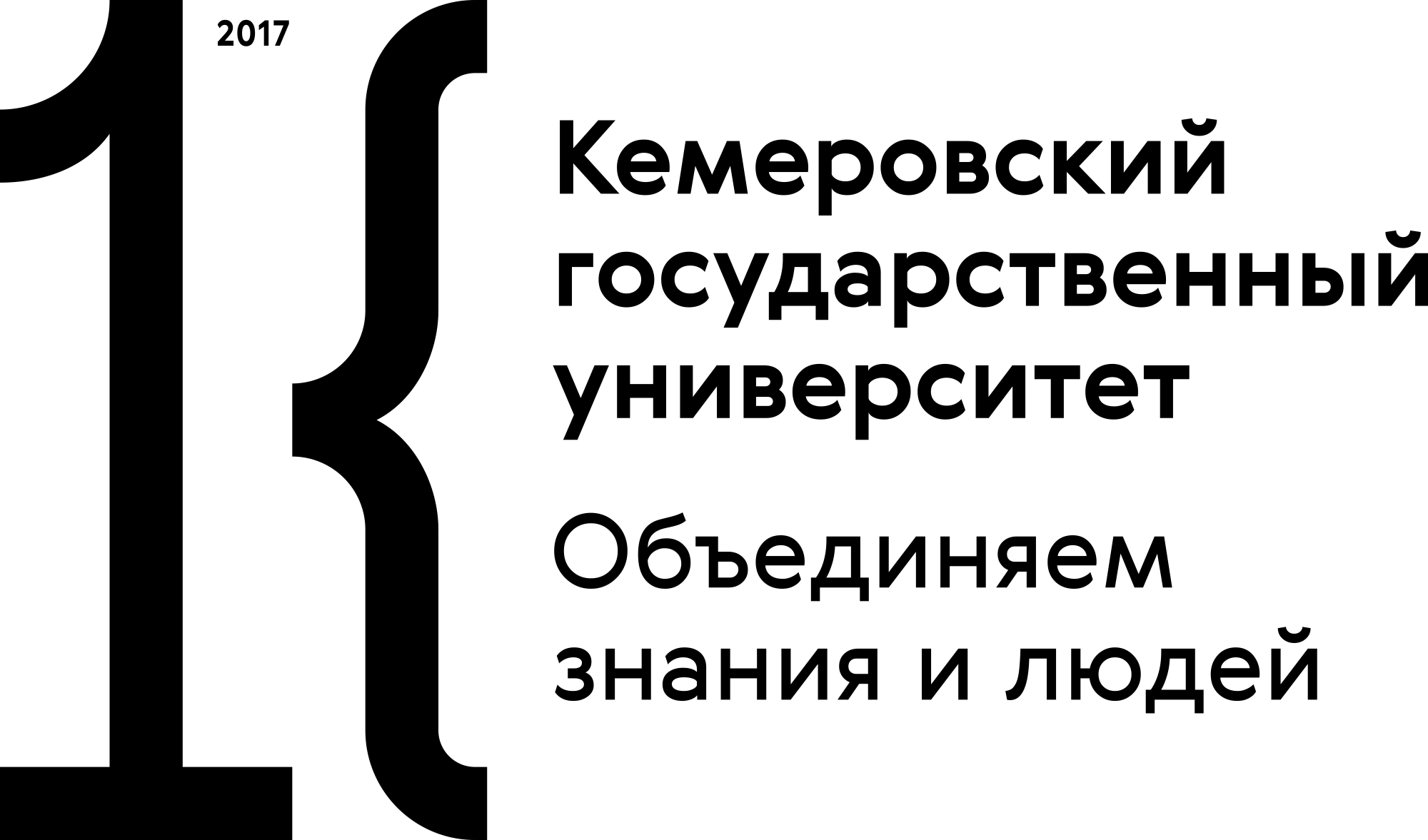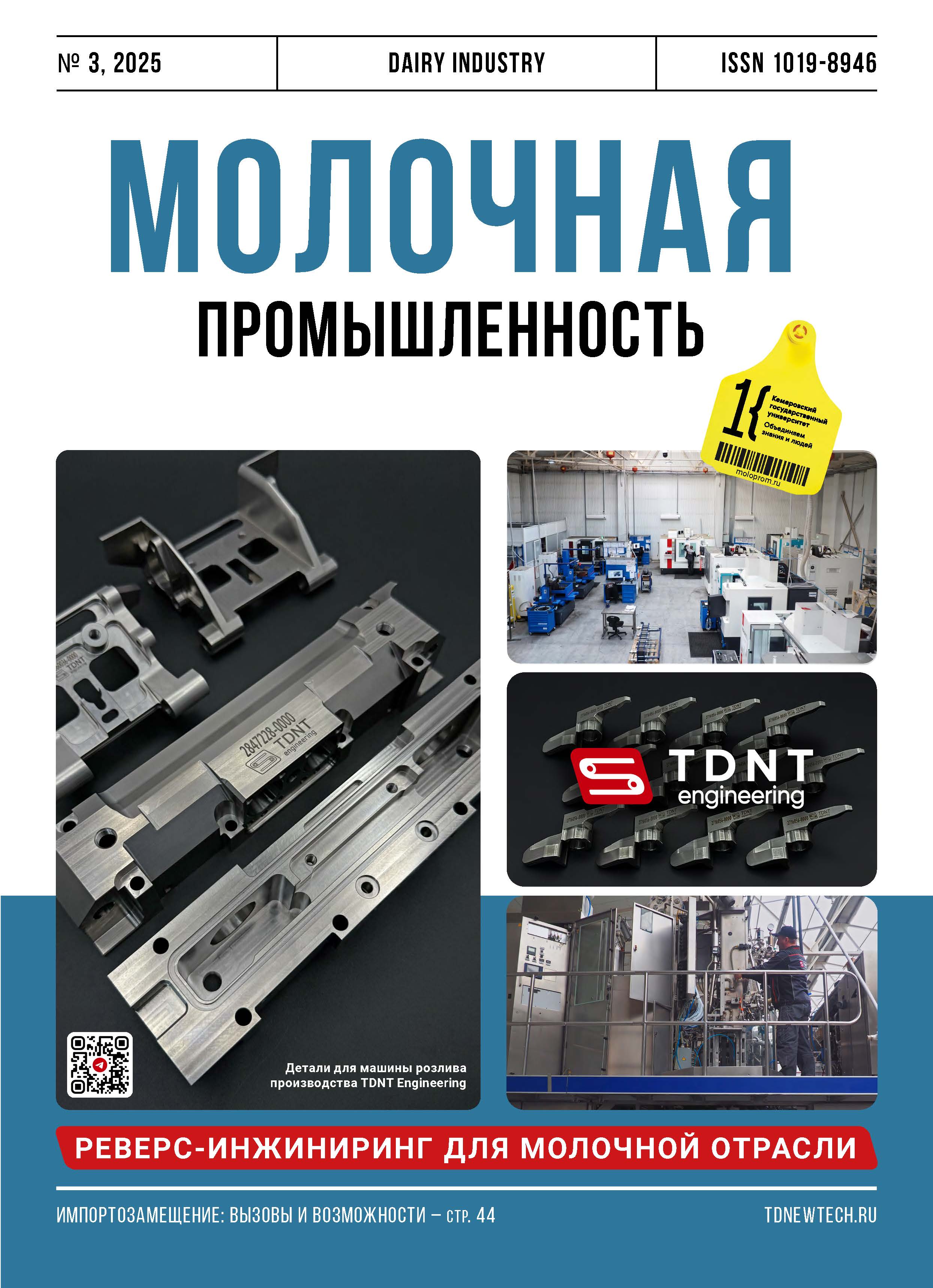Moscow, Russian Federation
Moscow, Moscow, Russian Federation
Moscow, Russian Federation
Moscow, Moscow, Russian Federation
from 01.01.2021 until now
Moscow, Moscow, Russian Federation
Spoilage markers that appear during food processing and storage are important quality and safety indicators. Canned milk powder is a popular raw material used in the food industry. The identification and assessment of changes occurring at each stage of its shelf life are an important food safety issue. This review systematizes the current scientific knowledge on spoilage types, markers, mechanisms, and detection. The results may help to improve the current quality control strategy for long shelf-life dairy products. The review covered Russian and English-language publications registered in eLIBRARY.RU, Google Scholar, CyberLeninka, PubMed, and ScienceDirect in 2015-2024. The article describes the degradation of carbohydrates, fats, and proteins, as well as the most effective methods of its detection. The main processes affecting the quality of milk powder are protein-carbohydrate interactions, e.g., the Maillard reaction, as well as various forms of hydrolytic and oxidative spoilage. Despite the recent progress in the early detection of milk powder spoilage, this field of food science has some unresolved tasks, e.g., detection and monitoring of marker compounds that develop during technological processing. The data can be used to strategize the quality control, increase the stability, and extend the shelf life of canned milk powder.
milk powder, spoilage markers, Maillard reaction, oxidative spoilage of fat and protein, proteolysis, lipolysis
1. Galstyan, A. G. Industriya H.0. Pischevaya promyshlennost' / A. G. Galstyan // Pischevaya metainzheneriya. 2023. T. 1, № 2. S. 7–10. https://doi.org/10.37442/fme.2023.2.33; https://elibrary.ru/jqenju
2. Galstyan, A. G. Modern approaches to storage and effective processingof agricultural products for obtaining high quality food products / A. G. Galstyan [et al.] // Herald of the Russian Academy of Sciences. 2019. Vol. 89(2). P. 211–213. https://doi.org/10.1134/S1019331619020059; https://elibrary.ru/xdajyn
3. Oganesyanc, L. A. Monitoring kachestva pischevyh produktov – bazovyy element strategii / L. A. Oganesyanc, S. A. Hurshudyan, A. G. Galstyan // Kontrol' kachestva produkcii. 2018. № 4. S. 56–59. https://elibrary.ru/yuivrh
4. Tsoukas, V. Enhancing Food Supply Chain Security through the Use of Blockchain and TinyML / V. Tsoukas [et al.] // Information. 2022. Vol. 13(5). 213. https://doi.org/10.3390/info13050213
5. Abdel-Naeem, H. H. S. Improvement of the microbial quality, antioxidant activity, phenolic and flavonoid contents, and shelf life of smoked herring (Clupea harengus) during frozen storage by using chitosan edible coating / H. H. S. Abdel-Naeem, K. I. Sallam, N. M. L. Malak // Food Control. 2021. Vol. 130. 108317. https:doi.org/10.1016/j.foodcont.2021.108317
6. Kabir, M. R. Formulation of yogurt with banana peel extracts to enhance storability and bioactive properties / M. R. Kabir [et al.] // Journal of Food Processing and Preservation. 2021. Vol. 45(3). e15191. https://doi.org/10.1111/jfpp.15191
7. Fadiji, T. A. Review on antimicrobial packaging for extending the shelf life of food / T. Fadiji [et al.] // Processes. 2023. Vol. P. 590. https://doi.org/10.3390/pr11020590
8. Chadha, U. Current trends and future perspectives of nanomaterials in food packaging application / U. Chadha [et al.] // Journal of Nanomaterials. 2022. Vol. 2022(1). 2745416. https://doi.org/10.1155/2022/2745416
9. Yurova, E. A. Kontrol' kachestva i bezopasnosti produktov funkcional'noy napravlennosti na molochnoy osnove / E. A. Yurova // Molochnaya promyshlennost'. 2020. № 6. S. 12–15. https://doi.org/0.31515/1019-8946-2020-06-12-15; https://elibrary.ru/rrqjfm
10. Ryabova, A. E. Effects of storage conditions on milk powder properties / A. E. Ryabova, V. K. Semipyatnyi, A. G. Galstyan // Journal of Dairy Science. 2023. Vol. 106(10). P. 6741–6758. https://doi.org/10.3168/jds.2022-23094; https://elibrary.ru/asmzqy
11. Cheng, J. Evaluating potential markers of spoilage foods using a metabolic profiling approach / J. Cheng [et al.] // Food Analytical Methods. 2015. Vol. 8. P. 1141–1149. https://doi.org/10.1007/s12161-014-9999-z
12. Kumar, A. Biosensors for food spoilage detection: a comprehensive review of current advances / A. Kumar [et al.] // Journal of Food Chemistry & Nanotechnology. 2024. Vol. 10(S1). P. S73–S82. https://doi.org/10.17756/jfcn.2024-s1-010
13. Fan, X. Markers and Mechanisms of Deterioration Reactions in Dairy Products / X. Fan [et al.] // Food Engineering Reviews. 2023. Vol. 15. P. 230–241. https://doi.org/10.1007/s12393-023-09331-9
14. Kruchinin, A. G. Rol' tehnologicheskih svoystv suhogo moloka v formirovanii kachestva pischevyh sistem / A. G. Kruchinin [i dr.] // Vestnik Krasnoyarskogo gosudarstvennogo agrarnogo universiteta. 2020. № 8(161). S. 166–173. https://doi.org/10.36718/1819-4036-2020-8-166-173; https://elibrary.ru/ogxczg
15. Martínez-Monteagudo, S. I. Kinetics of lactulose formation in milk treated with pressure-assisted thermal processing / S. I. Martínez-Monteagudo, M. D. A. Saldaña // Innovative Food Science & Emerging Technologies. 2015. Vol. 28. P. 22–30. https://doi.org/10.1016/j.ifset.2014.12.010
16. Alkadur, M. I. Vliyanie termizacii i pasterizacii na kachestvo suhogo moloka / M. I. Alkadur [i dr.] // Tehnika i tehnologiya pischevyh proizvodstv. 2024. T. 54, № 2. S. 275–284. https://doi.org/10.21603/2074-9414-2024-2-2506; https://elibrary.ru/zmqcha
17. Ho, J.-H. Discrimination of reconstituted milk from fresh skim milk by using lactulose and furosine as milk quality indicators / J.-H. Ho [et al.] // Journal of Agriculture and Food Research. 2024. V. 18. 101336. https://doi.org/10.1016/j.jafr.2024.101336
18. Li, M. Quantitative assessment of furosine, furfurals, and advanced glycation end products in different types of commercially available cheeses / M. Li [et al.] // Food Control. 2022. Vol. 136. P. 108866. https://doi.org/10.1016/j.foodcont.2022.108866
19. Shi, X. Research of the determination method of furfurals and furosine in milk and the application in the quality evaluation of milk / X. Shi [et al.] // Quality Assurance and Safety of Crops & Foods. 2022. Vol. 14(1). P. 12–23. https://doi.org/10.15586/qas.v14i1.929
20. Rufian-Henares, J. A. Furosine content, loss of o-phthaldiadehyde reactivity, fluorescence and colour in stored enteral formulas / J. A. Rufian-Henares, B. Garcia-Villanova, E. Guerra-Hernandez // International Journal of Dairy Technology. 2002. Vol. 55(3). P. 121–126. https://doi.org/10.1046/j.1471-0307.2002.00039.x
21. Zhang, Z. Determination of lactulose in foods: a review of recent research / Z. Zhang [et al.] // International Journal of Food Science & Technology. 2010. Vol. 45(6). P. 1081–1087. https://doi.org/10.1111/j.1365-2621.2010.02278.x
22. Sadiq, F. A. Microbiota of milk powders and the heat resistance and spoilage potential of aerobic spore-forming bacteria / F. A. Sadiq, S. Flint, G. Q. He // International Dairy Journal. 2018. Vol. 85. P. 159–168. https://doi.org/10.1016/j.idairyj.2018.06.003
23. Church, F. C. Spectrophotometric assay using o-phthaldialdehyde for determination of proteolysis in milk and isolated milk proteins / F. C. Church [et al.] // Journal of dairy science. 1983. Vol. 66(6). P. 1219–1227. https://doi.org/10.3168/jds.S0022-0302(83)81926-2
24. Chove, L. M. Comparison of methods for analysis of proteolysis by plasmin in milk / L. M. Chove, A. S. Grandison, M. J. Lewis // Journal of Dairy Research. 2011. Vol. 78(2). P 184–190. https://doi.org/10.1017/S0022029911000094
25. Mannion, D. T. Comparison and validation of 2 analytical methods for the determination of free fatty acids in dairy products by gas chromatography with flame ionization detection / D. T. Mannion, A. Furey, K. N. Kilcawley // Journal of Dairy Science. 2016. Vol. 99(7), P. 5047–5063. http://doi.org/10.3168/jds.2015-10795
26. Amores, G. Total and free fatty acids analysis in milk and dairy fat / G. Amores, M. Virto / Separations. 2019. Vol. 6(1). 14. https://doi.org/10.3390/separations6010014
27. Mannion, D. T. Development and validation of a novel free fatty acid butyl ester gas chromatography method for the determination of free fatty acids in dairy products / D. T. Mannion, A. Furey, K. N. Kilcawley // Journal of agricultural and food chemistry. 2018. Vol. 67(1). P. 499–506. https://doi.org/10.1021/acs.jafc.8b05462
28. Yurova, E. A. Kontrol' molochnoy produkcii v usloviyah trebovaniy tehnicheskih reglamentov TS. Primenenie vysokoeffektivnyh metodov analiza / E. A. Yurova // Molochnaya promyshlennost'. 2015. № 6. S. 22–24. https://elibrary.ru/twbeif
29. Mehta, B. M. Comparison of five analytical methods for the determination of peroxide value in oxidized ghee / B. M. Mehta, V. B. Darji, K. D. Aparnathi // Food chemistry. 2015. Vol. 185. P. 449–453. https://doi.org/10.1016/j.foodchem.2015.04.023
30. Asakawa, T. A colorimetric microdetermination of peroxide values utilizing aluminum chloride as the catalyst / T. Asakawa, S. Matsushita // Lipids. 1980. Vol. 15(11), P. 965–967. https://doi.org/10.1007/bf02534423
31. Ribourg-Birault, L. Quantification of Hydroperoxides in Oils and Fats, Oil-in-Water Emulsions, and Food Products by Ferrous Oxidation–Xylenol Orange Method / L. Ribourg-Birault, C. Genot // Multidimensional Characterization of Dietary Lipids. Methods and Protocols in Food Science. Ed. by C. Lopez [et al.]. – NY: Humana, 2024. – P. 161–184. https://doi.org/10.1007/978-1-0716-3758-6_13
32. Cesa, S. Malondialdehyde contents in infant milk formulas / S. Cesa // Journal of agricultural and food chemistry. 2004. Vol. 52(7). P. 2119–2122. https://doi.org/10.1021/jf034446l
33. Fenaille, F. Comparison of analytical techniques to quantify malondialdehyde in milk powders / F. Fenaille [et al.] // Journal of Chromatography A. 2001. Vol. 921(2), P. 237–245. https://doi.org/10.1016/s0021-9673(01)00883-4
34. Samarra, I. Analysis of oxylipins to differentiate between organic and conventional UHT milks / I. Samarra [et al.] // Food Chemistry. 2020. Vol. 343. 128477. https://doi.org/10.1016/j.foodchem.2020.128477
35. Hellwig, M. Analysis of protein oxidation in food and feed products / M. Hellwig // Journal of Agricultural and Food Chemistry. 2020. Vol. 68(46). P. 12870–12885. https://doi.org/10.1021/acs.jafc.0c00711
36. Zhang, L. Recent advances on characterization of protein oxidation in aquatic products: A comprehensive review / L. Zhang [et al.] // Critical reviews in food science and nutrition. 2024. Vol. 64(6). P. 1572–1591. https://doi.org/10.1080/10408398.2022.2117788
37. Domínguez, R. Protein oxidation in muscle foods: a comprehensive review / R. Domínguez [et al.] // Antioxidants. 2022. Vol. 11(1). 60. https://doi.org/10.3390/antiox11010060







